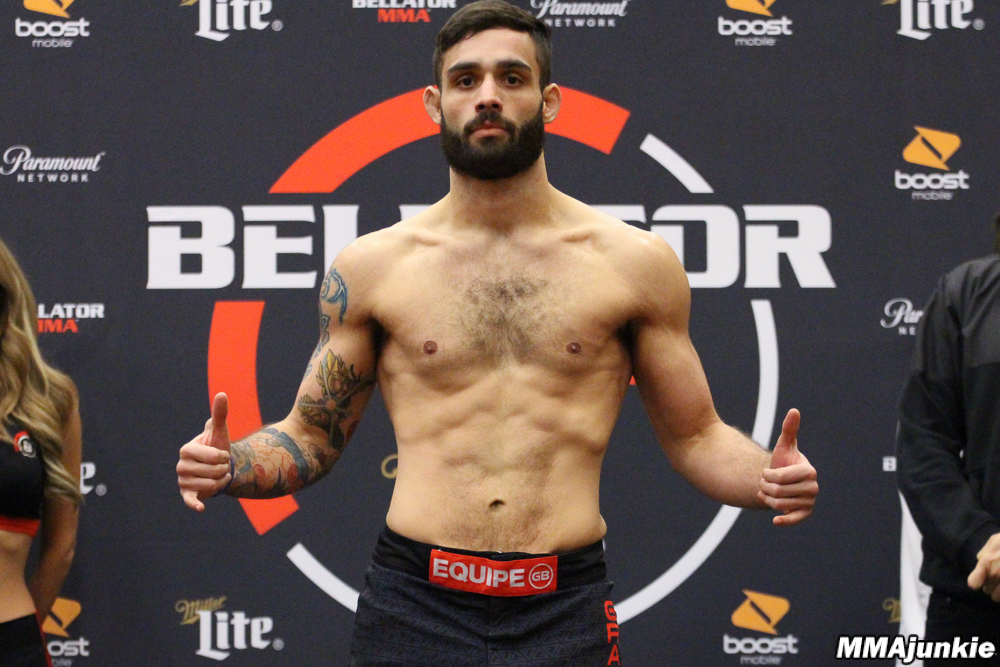
UFC had been entertaining MMA fans for 19 years by the time the first two women stepped into the ring. President Dana White had been reluctant to pick up women’s MMA, arguing that there was not enough depth to create a female division, but that all changed when he saw Ronda Rousey in action.
The Californian native blazed a trail of destruction through the Strikeforce scene, using her trademark armbar to submit all of her opponents. White was sold, and he brought in Rousey to fight Liz Carmouche for the UFC bantamweight title in August 2012.
It served as the headline bout at UFC 157, which achieved 450,000 pay-per-view buys. That represented a significant improvement on UFC 158, headlined by José Aldo v Frankie Edgar. Fans were not disappointed, as Rousey and Carmouche delivered scintillating action.
A Brave New Era
“This is a gigantic cultural moment!” declared commentator Joe Rogan as they stepped into the ring at the sold-out The Honda Center in Anaheim, California.
Rousey was the star draw, having won a judo medal at the Beijing Olympics and built up a formidable reputation at Tuff-N-Uff and Strikeforce. Carmouche, a former marine who served three tours in the Middle East, was reportedly the only woman willing to take a fight against such a devastating opponent.
Fans rose to their feet to cheer on the two women as they engaged in rapid, highly technical combat. Carmouche maneuverered Rousey into a rear-naked choke and it looked like an upset was on the cards, but Rousey endured and eventually broke the hold as they crashed to the ground.
With 11 seconds remaining of the first round, she dragged Carmouche into a signature armbar and ended the fight. It was brutal and thrilling in equal measures, and it heralded a new dawn for UFC.
The Rousey Effect
In the immediate aftermath of the fight, White announced that he had signed 10 female fighters to UFC, with five more poised to sign imminently.
“This is, without a doubt, the most media attention we’ve ever had leading up to a fight,” said White. He hailed Rousey’s impact, which is credited with giving MMA a tremendous boost in the popularity stakes.
“No fighter that has ever fought in the UFC has had more attention than she has, it’s a fact,” White said. “Honestly, going into this thing, I didn’t know that that would happen. I didn’t think HBO and Time Magazine and all these other outlets that never cover us would. I didn’t see that happening.”
No wonder he was so keen to secure more female fighters and rapidly build on the success. The number of women’s UFC bantamweight bouts grew, but Rousey remained the chief ambassador and she enjoyed several years of success as a dominant champion.
A Major Expansion
Another landmark took place in 2013, when popular reality TV show The Ultimate Fighter – which sees young hopefuls compete for a six-figure UFC contract – introduced women to the series. Julianna Pena won the season 18 title, and then in 2014 a second women’s division was introduced – the 115-pound strawweight.
Carla Esparza emerged as the first UFC strawweight champion after recording a thrilling third round submission victory over Rose Namajunas in December 2014. Three months later, she lost the belt when she was knocked out by Joanna Jedrzejczyk at UFC 185 in Dallas, highlighting just how competitive women’s UFC was becoming.
Rousey remained the star draw and she reminded everyone of her talents when she knocked out Bethe Coreeia at UFC 190. She then went to Melbourne, Australia, to take on Holly Holm at UFC 193, and Rousey suffered a shock defeat, the first of her career.
A Maturing Sport
A clip of Holm delivering an absolutely brutal kick to Rousey’s face went viral. The champion had been dethroned in a humiliating fashion, and it signalled a new era for women’s UFC. Rousey was never the same again – she returned for one more fight and was comprehensively beaten by Amanda Nunes, before moving to WWE – and Holm did not fare much better.
The Australian fighter lost her subsequent three fights, to Miesha Tate, Valentina Shevchenko and Germaine de Randamie, before finally tasting victory again.
Nowadays bantamweight champion Nunes – who has beaten Rousey, Holm, Chris Cyborg, Shevchenko and de Randamie – is widely considered to be the best pound-for-pound fighter in the world.
Shevchenko, Cyborg, Weili Zhang, Namajuna and Jedrzejczyk are all big names, and the level of competition is extremely high, resulting in a steady stream of exciting fights each year. A list of the big upcoming fight can be found here for exciting UFC odds and you will see the likes of Shevchenko displayed prominently among the greatest male stars in the business.
Now UFC has decided to split up the pound-for-pound rankings, ensuring that men and women fighters will now be ranked in their own categories. This is the decade that women’s UFC will come of age and its popularity seems certain to soar.



